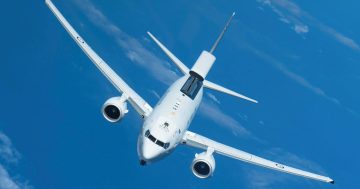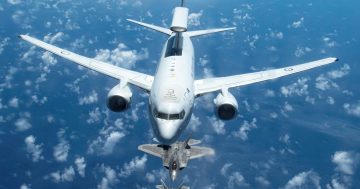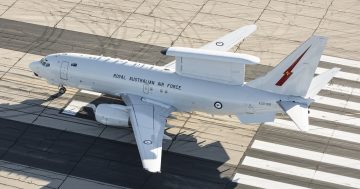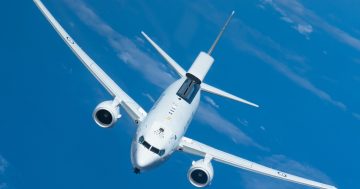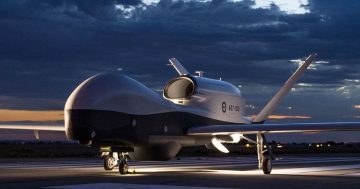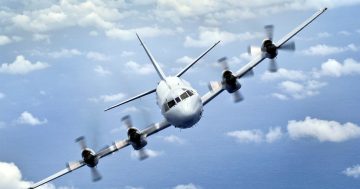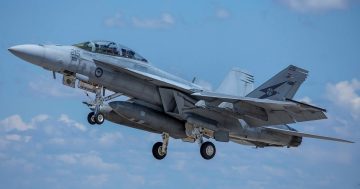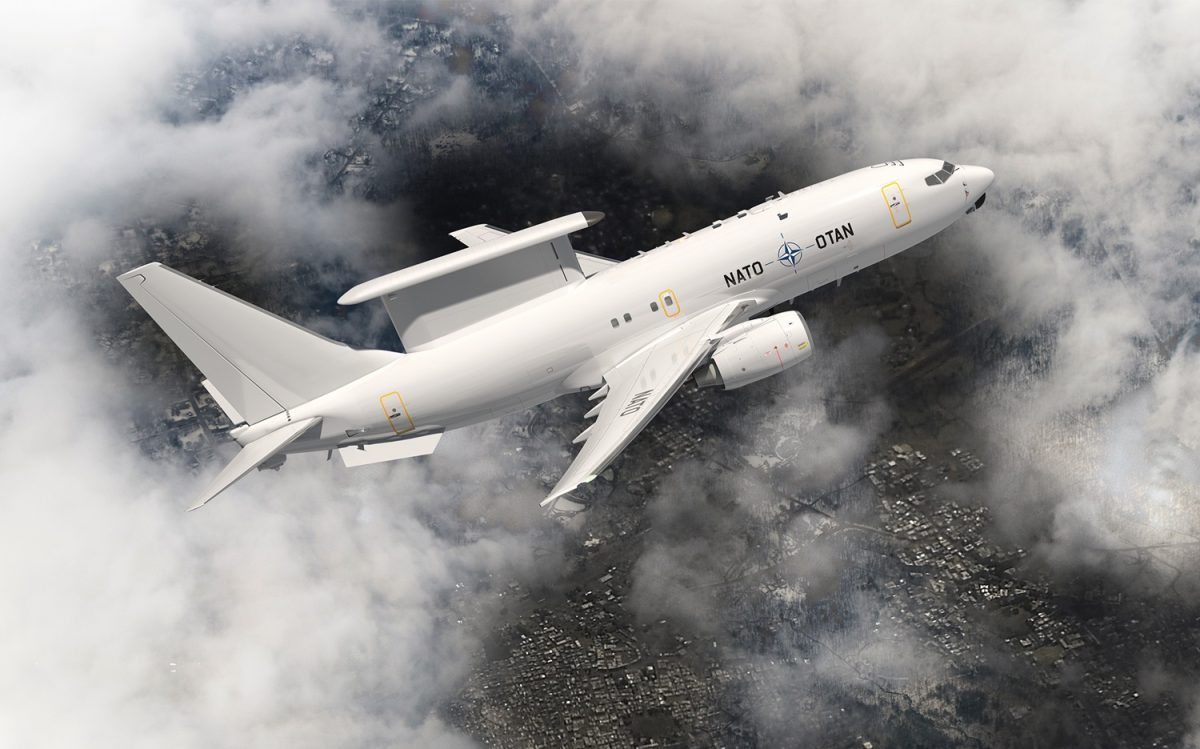
Concept art of a NATO E-7A in flight. Image: NATO.
The North Atlantic Treaty Organisation (NATO) Support and Procurement Agency (NSPA) has announced it has selected Boeing’s E-7A Wedgetail aircraft to meet its Alliance Future Surveillance and Control (AFSC) capability requirement.
The announcement makes NATO the sixth customer for the aircraft after Australia, South Korea, Turkey, the UK and the US. NATO’s current Boeing E-3 airborne warning and control system (AWACS) fleet, which has been a key joint European surveillance and control asset, is scheduled to retire by 2035 and is already considered to be nearing obsolescence.
In a statement, NSPA said: “The Support Partnership Nations – Belgium, Germany, Luxembourg, the Netherlands, Norway, Romania, and the United States – and NSPA concluded that the Boeing E-7A AEW&C Wedgetail is the only known system currently capable of fulfilling the strategic commands’ essential operational requirements and key performance parameters and available for delivery within the timeframe required.”
“This announcement marks a significant milestone in NATO’s ongoing efforts to enhance its readiness and capabilities in the years to come,” NSPA general manager Stacy Cummings said.
“NSPA’s acquisition strategy of a sole-source, FMS [US foreign military sales], multinational solution is set to deliver a range of benefits that will bolster the Alliance’s ability to respond to evolving security challenges.”
The E-7A was originally developed in response to Australia’s AIR 5077 airborne early warning and control requirement, and after a protracted and troubled development, the system has since gone on to become a world-leading airborne command and control capability.
The mention of FMS in Ms Cummings’ statement suggests the NATO aircraft may be in essence identical to those being developed for the US Air Force, which requires 26 E-7As, while the UK is building three for its own use. The Royal Australian Air Force operates six E-7As, while South Korea and Turkey operate four aircraft each.
The E-7A is based on a Boeing 737-700 commercial airliner airframe, but features a distinct ”surfboard” multifunction electrically scanned array (MESA) radar on its upper rear fuselage, and numerous smaller antennas and apertures around the aircraft. It is capable of monitoring and controlling thousands of square miles of airspace, and is air-to-air refuellable for extended missions of 14 hours or more.
In place of the 737’s passenger interior, the Wedgetail has up to 10 side-facing consoles at which airborne radar, electronic warfare, and air battle management officers monitor the airspace and surface out to 300 km or beyond. The interior also has a large bank of computers, a galley, and a crew rest area for long-endurance missions.
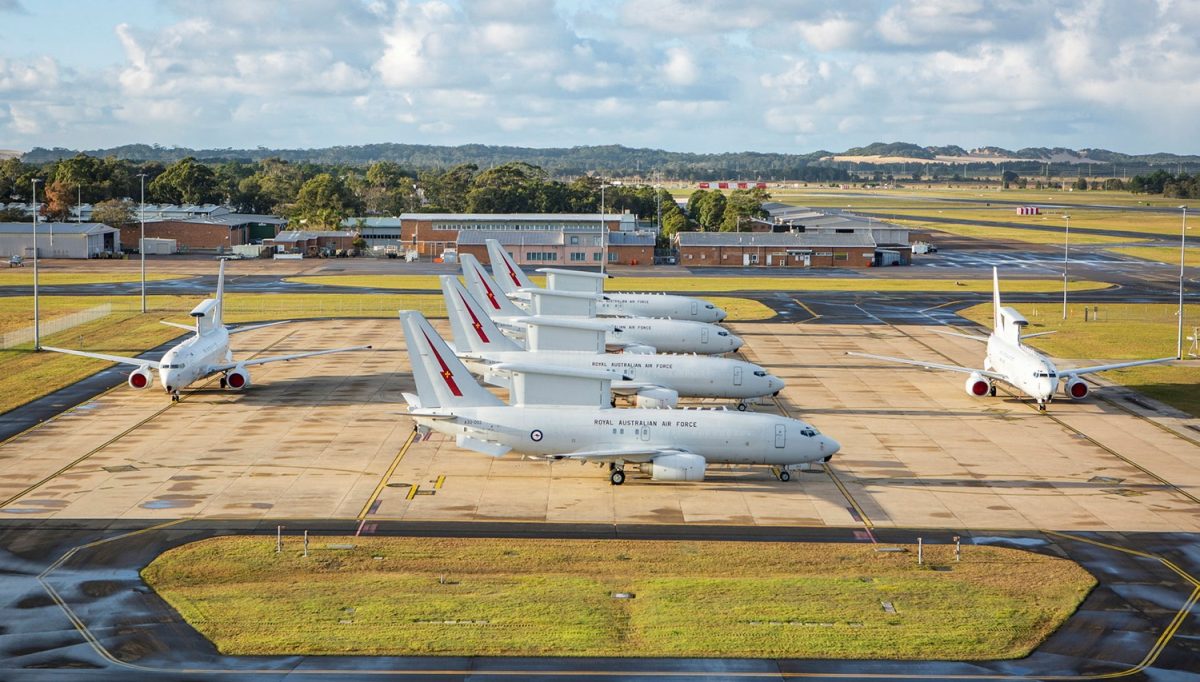
All six of No. 2 Squadron RAAF’s E-7A Wedgetails on the ramp at RAAF Base Williamtown, near Newcastle. Photo: ADF.
An RAAF E-7A is currently deployed to Germany to provide support to NATO and other forces supplying weapons and other supplies to Ukraine.
In a company statement, Boeing said: “We appreciate the confidence from the NSPA and participating NATO nations in the proven capabilities and interoperability benefits of the E-7 Airborne Early Warning & Control (AEW&C) aircraft. We stand ready to support this Foreign Military Sale and deliver this exceptional capability that will enhance NATO’s readiness.”
NATO expects to be able to declare an initial operational capability (IOC) of its E-7As in 2031.












